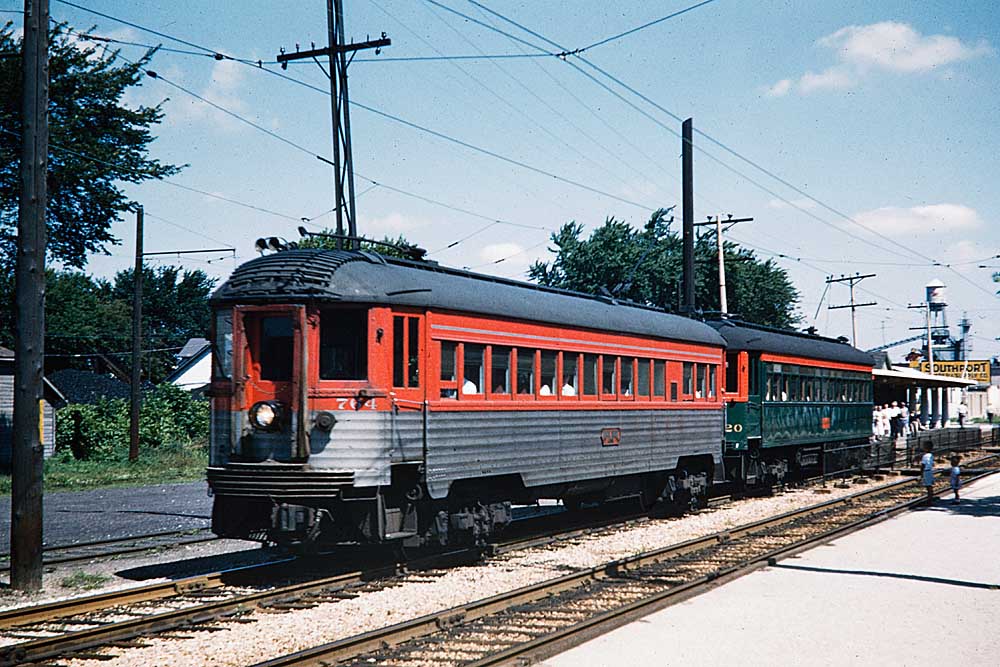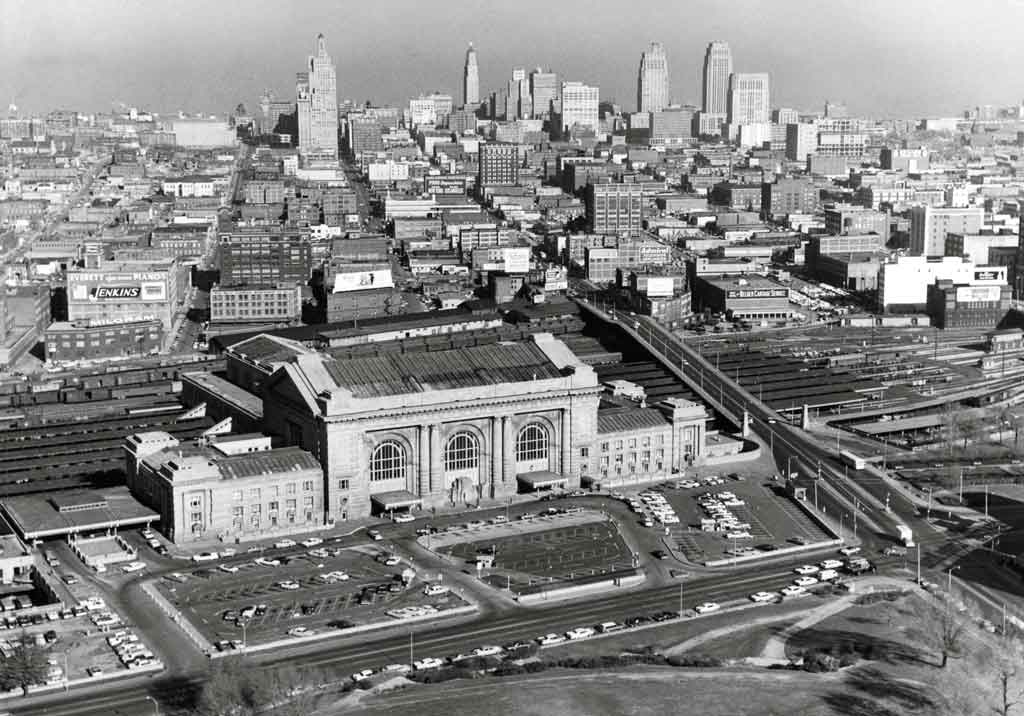Interurbans

Interurbans were electric railroads running between cities, often of lighter construction than “steam” railroads. They had their own rights of way through the countryside but usually ran in streets when in town, often sharing tracks with city streetcars.
Trains consisted of one (sometimes more) cars. Passengers were their primary focus, though some lines came to haul freight, too.
The term “interurban” sets such operations apart from technologically similar interurban street railways, and also can refer to a car on a city-to-city electric line.
Growth and decline
The interurban movement began in the mid-1890s, on the heels of the electrification of street railways, when advances in power-distribution technology permitted the transmission of electricity over greater distances than had been possible.
Mileage peaked at 18,100 in 1917 (vs. a high of 253,000 miles in 1920 for steam roads), when automobiles and improved roads began to take their toll. Interurban mileage leveled off, then began a gradual decline which became precipitous with the onset of the Great Depression.
The few lines that survived the 1930s enjoyed renewed prosperity with the increased economic activity and gas- and tire-rationing of World War II. The postwar years saw more abandonments, absorption by steam roads, or conversion of interurbans to diesel-powered short-line freight haulers.
By the mid-1950s, virtually all the classic interurbans were gone or greatly altered in character, although a few commuter-oriented carriers hung on, notably the still-running South Shore Line between Chicago and South Bend, Ind.
Rolling stock and power distribution
Interurban cars could be described as souped-up, sometimes lavishly appointed, trolley cars. Most had powerful motors and high-speed gearing, and they were usually bigger and heavier than their city cousins.
Early cars were beautiful examples of wood carbuilding. Heavy steel construction was adopted in the 1910’s; lightweight steel and aluminum cars capable of 80 mph were introduced around 1930.
While the coach configuration was the most common, car types were at least as diverse as those on steam roads: besides baggage and combine cars, interurbans rostered diners, parlor cars (some with observation platforms), sleepers – even funeral cars and breezy open cars.
The J. G. Brill Co. was the most prolific of the two dozen interurban carbuilders.
Most interurbans used a single overhead wire to distribute current to cars equipped with trolley poles. Catenary and pantographs could be found on some heavy-duty systems, and a handful operated off a third rail.
Geographical pockets of interurbans
Though interurbans ran in nearly every U.S. state, they were concentrated in the upper Midwest. Forty percent of the total interurban mileage was in Ohio, Indiana, Michigan, Illinois, and Wisconsin. It was possible to travel hundreds of miles via connecting lines.
Development was relatively sparse in the West (except for the coastal states), the South, and in Canada.
Interurban lines were generally locally financed and managed, at least initially. They were immensely popular in the early years, being seen as more modern, clean, and convenient than steam roads, which by the turn of the twentieth century had become corporate giants often unresponsive to local needs.
The steam roads, in turn, did all they could to thwart the interurbans’ spread. When an interurban needed to cross a steam road, it was likely to be forced to build a costly over- or underpass. Also, railroads often refused to interchange freight with interurbans.
Freight service
Initially a sideline, freight became important for some interurbans as passenger traffic faded. Frequent schedules and short trains made interurbans ideal for less-than-carload and express shipments.
But carload freight movement was hampered by severe grades and curves, weight-restricted bridges, gauge incompatibility, city ordinances, and steam-road hostility, though several systems were able to enter this trade. (South Shore was one.)
Small electric locomotives were used until, on those lines that lasted long enough, diesels took over.
Many lines without interchange handled freight in powered cars resembling baggage cars; such “freight motors” often pulled trains of special interurban freight cars.













